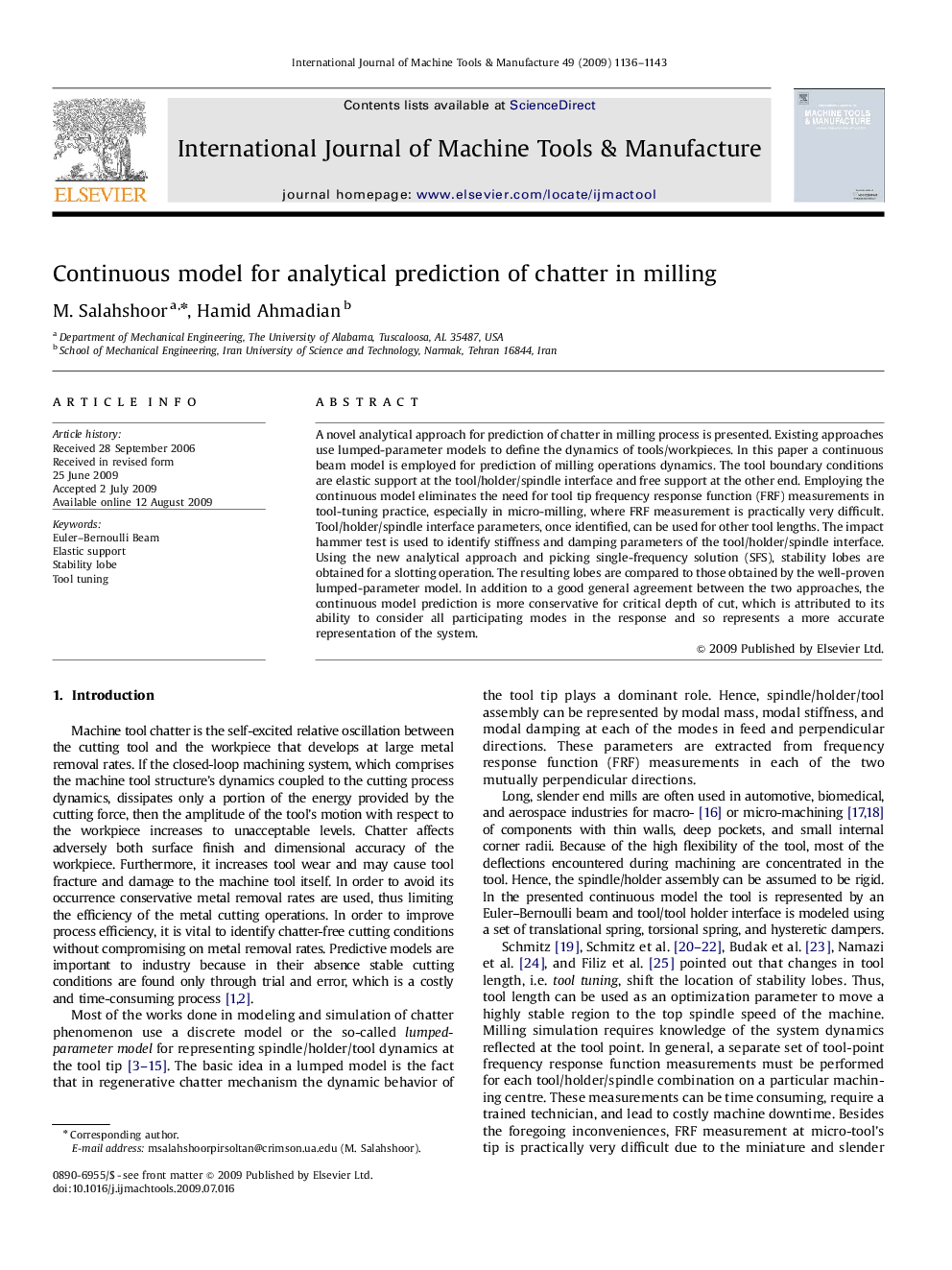| Article ID | Journal | Published Year | Pages | File Type |
|---|---|---|---|---|
| 780813 | International Journal of Machine Tools and Manufacture | 2009 | 8 Pages |
A novel analytical approach for prediction of chatter in milling process is presented. Existing approaches use lumped-parameter models to define the dynamics of tools/workpieces. In this paper a continuous beam model is employed for prediction of milling operations dynamics. The tool boundary conditions are elastic support at the tool/holder/spindle interface and free support at the other end. Employing the continuous model eliminates the need for tool tip frequency response function (FRF) measurements in tool-tuning practice, especially in micro-milling, where FRF measurement is practically very difficult. Tool/holder/spindle interface parameters, once identified, can be used for other tool lengths. The impact hammer test is used to identify stiffness and damping parameters of the tool/holder/spindle interface. Using the new analytical approach and picking single-frequency solution (SFS), stability lobes are obtained for a slotting operation. The resulting lobes are compared to those obtained by the well-proven lumped-parameter model. In addition to a good general agreement between the two approaches, the continuous model prediction is more conservative for critical depth of cut, which is attributed to its ability to consider all participating modes in the response and so represents a more accurate representation of the system.
